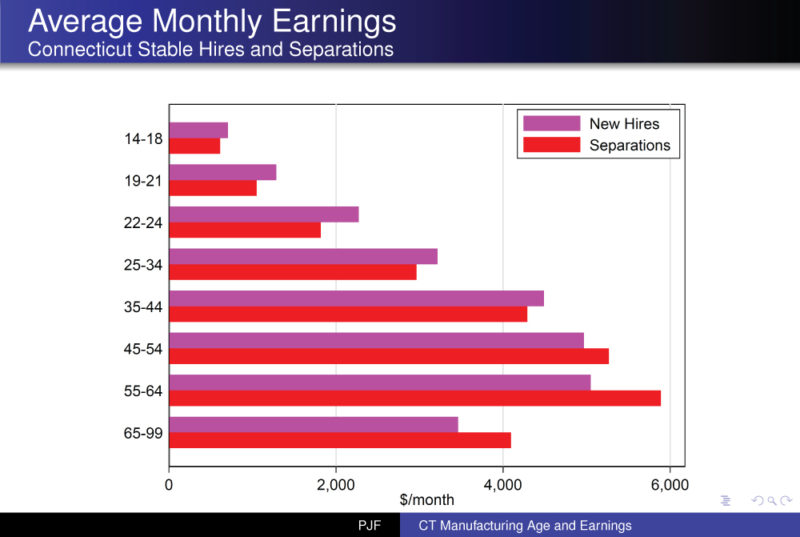Case study: attracting skilled manufacturing workers a challenge as aging baby boomers retire
WASHINGTON – Nearly one-fourth of the manufacturing workforce is age 55 or older, a demographic reality that signals a labor shortage for the nation’s fifth-largest employer.
A recent survey found that retaining and attracting quality workers is one of the top challenges facing the manufacturing industry.
The labor shortage in manufacturing is due to the aging and gradual retirement of baby boomers.
According to the U.S. Census Bureau’s Job-to-Job Flows Explorer data tool, the top five industries manufacturing workers who left manufacturing in 2016 went into were: Administrative and Support and Waste Management and Remediation Services; Construction; Professional, Scientific, and Technical Services; Wholesale Trade; and Retail Trade.
A recent U.S. Census Bureau Local Employment Dynamics (LED) webinar, titled Manufacturing Workers Age Profile and Implications for Earnings, focused on hiring and pay, featuring research focusing on the state of Connecticut.
“Before Covid-19, Connecticut experienced a rise in manufacturing employment along with evidence that employment growth would be even stronger if employers could find the right workers to hire,” said Patrick Flaherty, assistant director of research and information at the Connecticut Department of Labor, who presented his research at the webinar.
A Connecticut Case Study
Flaherty examined the wages of Connecticut workers starting and leaving manufacturing jobs by age using the Census Bureau’s Longitudinal Employer-Household Dynamics (LEHD) Quarterly Workforce Indicators (QWI).
He found that average manufacturing wages were not rising as fast as would be expected during a labor shortage because the makeup of the manufacturing workforce was changing. When highly paid older workers leave or retire, new younger hires earn less than the older workers they replace.
Even though the overall hiring wage in manufacturing increased from 2010 to 2018, it is still lower than the pay of retirees who may have 30 to 40 years of experience.

The graphic above shows that in Connecticut, wages of those leaving manufacturing jobs were higher than the wages of those hired to replace them in 2018.
However, this was not the case for younger workers in 2018. Those leaving manufacturing jobs had lower wages than those hired to replace them.
Recruiting Manufacturing Workers
Manufacturing firms in Connecticut have taken innovative steps to boost recruitment and retain older workers to maximize productivity.
They have organized high school apprenticeship programs, open houses and plant tours and fast-track training programs at local community and technical colleges.
Companies nationwide are attracting skilled workers through retention incentives that include flex schedules, paid vacation time, family events, shift-work and competitive pay.
The need for social distancing during the pandemic may lead to a growing virtual workforce. For example, teams of specialists connected remotely can guide and support a smaller number of on-site personnel.









